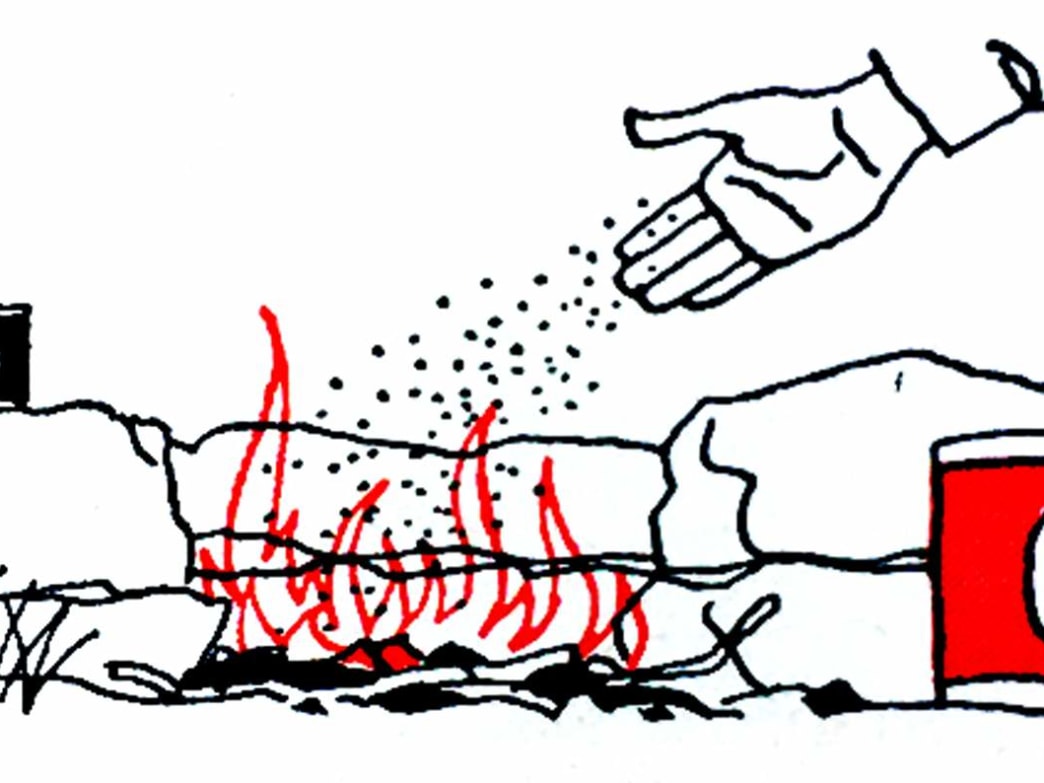
Alterations
Description
These would come in handy too...

For 35 years, in each issue of Field & Stream, H.G. “Tap” Tapply served up tidbits of hard-earned outdoor knowledge, in his extremely popular “Tap’s Tips” column. He covered most everything hunting and fishing, and now, more than 30 years since his retirement, in 1985, he remains a favorite among longtime readers of the magazine. Here, we’ve compiled 21 tips that—although published in the ’60s—are sure to prove useful on your next camping trip or big adventure. —The Editors
Here’s an outdoor cooking trick every camp chef should know: When the coals of a hardwood or briquet fire burst into flame, sprinkle a handful of common table salt over the fire. The salt will prevent the flames from flaring up and scorching the food.

The antiseptic solution named after Sir Joseph Lister, and used to cure the bad breath your best friend won’t tell you about, also serves as a surprisingly effective insect repellent, especially for black flies. In most cases, it relieves discomfort, too.

Breaking in a new pair of boots? Carry a tube of hobby cement, and if you start to develop a heel blister, daub the spot with a couple coats of cement. It will dry hard and smooth enough to protect the skin from further chafing. (From Victor Gibson, Waterloo, Iowa.)

To prevent eyeglasses from fogging in cool weather, try this tip from J. L. Crowgey of Roanoke, Va.: Cover both sides of the glass with a thin film of soap lather, allow it to dry, then polish with a soft, dry cloth. This leaves an invisible coating that resists the steam.

Here’s a tip for camp chefs who forget a spatula, from Derek Zegarchuk, of St. John, N. B.: Butter both sides of a thick slice of bread, remove the center, and break an egg into the hole. When it is fried on one side, pinch a corner of the bread and flip the whole works over.

Ask your wife to save an empty roll-on deodorant bottle. Rinse it out and fill it with liquid insect repellent. It’s perfect for applying bug juice without getting it on your hands, or in your eyes and mouth. The thin, small, handy bottle fits in a pocket, too.

Next time you pack grub for a camping trip, take some time to mark the contents on one end of each can, using a felt-tip ink marker. Then if it rains during the trip and some labels soak loose, you will still know which can contains beans, and which frankfurters.

An old 3-ring binder with the covers removed makes a handy gadget for keeping camp cooking utensils together in the packbasket or cook box. A. Weber of Edmonton, Alberta, says each ring will hold a couple of large forks, spoons, or pancake floppers.

The old saying that water will purify itself by running over seven stones is not true. Bacteria can travel the length of a stream and give anyone who drinks the water dysentery or worse. Except in a remote wilderness, carry safe water or drink only from bubbling springs.

When running a canoe downstream in heavy, rock-strewn water, shift the load forward. This sinks the bow so the currents can guide it into channels, clear of boulders. The opposite is true poling back upstream: lighten the bow so it slides away from rocks.

The naked blade of a well-sharpened camp ax or hatchet can be dangerous. A simple way to cover the cutting edge is to slit a short piece of garden hose lengthwise and force it over the blade. The hose is stiff enough to clamp firmly in place, yet is easily applied.

Water from a metal canteen will taste better if, after you use it, you hang it upside down with the stopper off so it can drain and dry. To get rid of a metallic, musty taste, wash it out with a couple of tablespoonfuls of baking soda, then rinse it thoroughly.

One of the most practical match-safes I have seen was sent to me recently by Tom Fulford of Richmond, Va. It is the plastic case of a nasal inhaler, which holds a dozen matches, shortened to fit. To make it extra-waterproof, Tom smears melted paraffin on the threads.

To prevent binoculars from swinging at the end of a neck strap, cut a 7-inch strip of soft leather and make button-size slits at each end. Then button the binoculars to your shirt. Undoing one end frees them for use. (Suggested by W. D. Hartman. Edmonton, Alta.)

Tray-made ice cubes melt fast and rattle noisily when dumped into a picnic cooler. Harold Rhodenbaugh of Newaygo, Mich., makes jumbo-sized cubes by freezing water in 2-quart milk cartons. I prefer plastic jugs, which are handy to drink from as the ice melts.

Correct arrow length is essential to accurate bow shooting, and arrows should be fitted to the archer’s draw. To learn the approximate length of arrow you need, measure your arm spread from fingertip to fingertip and divide the inches by 2½. It’s close, although not exact.

Baking soda can be used dozens of ways on outdoor trips. Dissolve a little in water to settle a “sour stomach” or to sweeten smelly ice boxes, coffee pots, thermos bottles. Made into paste, it soothes burns, bites, ivy poisoning. Use it as tooth powder, too.

Wonder how long it’s going to rain? Here’s a fairly reliable rule to remember: When clouds gather fast and rain starts falling, it will probably clear up soon. But when it starts to rain after a long period of cloudiness, chances are it will continue for several hours.

Next time you pack your camping gear, drop a bar of soap into the toe of an old full-length nylon stocking. In camp, hang the top of the stocking close to the washbasin. The soap can’t get lost or fall to the ground and get dirty, and it suds right through the nylon mesh.

Fitting .22 cartridges back into their cardboard box is about as easy as stuffing feathers into a thimble. Besides, the box will soon break apart. It’s much simpler to dump the ammo into a zippered tobacco pouch. It’s spillproof, pocket-size, and keeps the shells dry and clean.

Paddling a canoe is easiest and most efficient if the paddle is the correct length—and that depends on how tall you are. The stern paddle is the long one, and should stand at close to your eye level. The shorter bow paddle should about reach your chin.